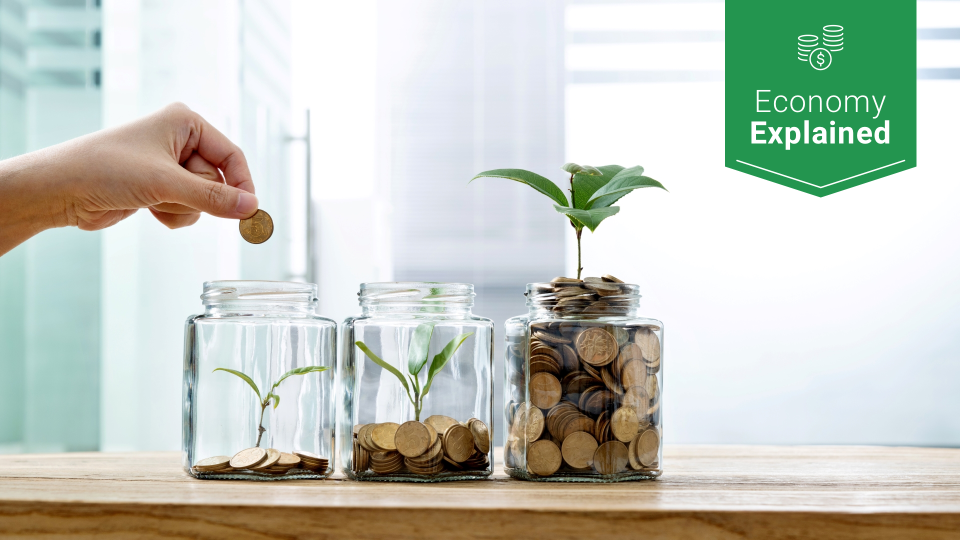Growth vs. Value Investing: What You Need To Know About Both To Make the Most of Your Money

In June, financial publications like CNBC began speculating about the end of the “great value rotation.” Growth stocks — like the big-name tech companies that broke so many market records over the last decade — had briefly fallen out of vogue. Investors had gravitated back toward banks, industrial manufacturers, and other value stocks, which suddenly felt safer. Then, the momentum reversed again as the growth bulls tugged the markets back in their direction once more.
The Economy and Your Money: All You Need To Know
Dividends: Why Are They Important to Your Investment Strategy?
But what’s the difference between growth investing and value investing, how can you tell which stocks are which, and how do you know if either strategy is right for you?
Value Stocks Are on Sale, Growth Stocks Are on the Rise
Both value and growth investing can be divided into all kinds of sub-strategies and competing philosophies, but generally:
Value investors are bargain hunters who try to sniff out companies they think are undervalued
Growth investors are on the hunt for companies that are on the way up, that will appreciate in value — and that might even go on to dominate their industries for decades to come.
There is no right or wrong philosophy. Some of the most famous and highly accomplished investors in the world have made fortunes both ways. David Dodd, Benjamin Graham and, most famously, Warren Buffett, are all elite value investors. William O’Neil, Thomas Rowe Price Jr. and Phil Fisher are all skilled growth investors.
Important: Do You Know the Differences Between the Stock Exchanges?
Growth Stocks Make Early Investors Rich
Growth stocks are the companies you regret not buying into as soon as you heard their names. Some of history’s greatest growth stocks have reshaped culture and commerce while making their ground-floor investors wealthy.
Microsoft, for example, oversaw society’s transition from analog to digital in the 1990s. Along the way, its stock launched from 50 cents a share to $30 — a gain of 5,900% — between 1990-1999, according to Investor’s Business Daily. Starbucks climbed 433% between 2000-2006 as it reinvented America’s coffee shop culture. Amazon jumped 880% between 2010-2017 alone, climbing from $120 to $1,000.
Find Out: How Earnings Estimates Impact Your Investments
How Do You Spot a Growth Stock Before It Grows?
Growth stocks rarely pay dividends and when they do, they’re small. That’s because growth companies have to reinvest all available resources into the expensive act of growing — expanding their products and services and increasing their revenues. In fact, many big growth companies are so committed to reinvestment that they don’t turn a profit for years.
When evaluating potential buys, according to Investor’s Business Daily, growth investors look for things like:
Strong return on equity: Shareholder investments are being put to good use
Strong profit margins: Revenues are growing and costs are being well-managed
Forward earnings growth: Earnings announcements reveal which companies are experiencing the most dramatic growth
Historical earnings growth: A history of increasing earnings is a key ingredient for any good growth stock
See: How the SEC Affects You and the Economy
Read: What To Expect From an Economic Boom
Value Stocks Give Prudent Investors More for Less
Unlike growth stocks, which tend to be expensive, value stocks have low prices in relation to the company’s performance, financial health and potential for growth. Another common difference is that value stocks often deliver above-market dividend yields. According to Merrill Edge, investors look for positive gaps between a stock’s cost and its potential value by examining things like the company’s cash flow, earnings, dividends, assets and revenue.
Value investors look for companies that:
Are priced lower than their industry peers
Have below-market price-to-book or price-to-earnings ratios
Grow their revenues slower than the market at large
Important: The Inverted Yield Curve and Why It Matters
Find Out: What Are IPOs and Are They Worth Investing In?
What Are Some Stocks That Are Trading Below Their Value?
Just like growth stocks, value stocks can be small companies, companies in emerging markets or giant corporations that are household names.
Currently, many analysts from outlets like Kiplinger and Motley Fool are reporting that Procter & Gamble, Tyson Foods, Johnson & Johnson and Warren Buffett’s own Berkshire Hathaway are among the most promising value stocks.
Keep Reading: What Happens When a Brokerage Firm Doesn’t Have Enough Capital To Cover Trades?
Hedging Your Bet? Everything You Need To Know About Hedge Funds
Same as With Most Stock Investments, ETFs Make It Easy
Financial professionals often recommend a blend of value and growth stocks as part of a diversified portfolio. Or, if you prefer, you could pick one strategy or the other and stick with it. Either way, you don’t have to be T. Rowe Price Jr. or Warren Buffett to make it work thanks to America’s favorite investment vehicle — ETFs.
Every major ETF company offers funds geared toward growth and value strategies. Some track companies based on size, like the iShares Russell 2000 Growth ETF (IWO), which contains small-cap growth stocks only. You might also pick an ETF that plucks stocks from a benchmark index, like the Vanguard S&P 500 Value ETF (VOOV).
Either way, you don’t have to choose just one and you don’t have to pick individual stocks — just decide if you want to own a bargain today or a behemoth tomorrow.
This article is part of GOBankingRates’ ‘Economy Explained’ series to help readers navigate the complexities of our financial system.
More From GOBankingRates
Take Our Poll: Have Recent Hacks Made You Question Crypto Security?
Nominate Your Favorite Small Business To Be Featured on GOBankingRates
Last updated: Sept. 1, 2021
This article originally appeared on GOBankingRates.com: Growth vs. Value Investing: What You Need To Know About Both To Make the Most of Your Money
